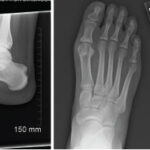 NEW YORK (Reuters Health)—Magnesium-based micromotors showed promise as a delivery system for hydrogen therapy to inflamed joints in an experimental model of rheumatoid arthritis, researchers say.
NEW YORK (Reuters Health)—Magnesium-based micromotors showed promise as a delivery system for hydrogen therapy to inflamed joints in an experimental model of rheumatoid arthritis, researchers say.
Hydrogen gas has been shown to neutralize overproduction of reactive oxygen species (ROS), which can degrade cartilage and bone and activate inflammatory cytokines, according to Dr. Yingfeng Tu of Southern Medical University, Guangzhou, and colleagues. The gas decreased inflammatory cytokine concentrations when given in drinking water. However, it is poorly soluble in body fluids and is rapidly eliminated when given orally.
The researchers developed micromotors as a way to produce and deliver the gas directly to the inflamed joint.
“Our micromotors are fabricated by asymmetrically coating magnesium microparticles with biodegradable hyaluronic acid and layers of PLGA,” a copolymer used in many FDA-approved medical devices, Dr. Tu explains in an email to Reuters Health. A small opening is left in the micromotor spheres to enable the magnesium to react with water.
“Due to the magnesium-water reaction,” Dr. Tu says, “the produced hydrogen functions not only as a driving force for [movement], but also as an active ‘drug’ for ROS inflammation scavenging.”
“The biodegradability of the whole system is important because the accumulation of non-degradable products may cause side effects, thus restricting translation to the clinic,” he adds.
Another advantage, he notes, is that the micromotors can be visualized by ultrasound, which is not the case for other micromotor systems.
As reported in Nano Letters, in experiments in simulated joint fluid, the micromotors were capable of moving on their own and showed prolonged, sustained of release of hydrogen bubbles.1
Working in a rat model of rheumatoid arthritis, the team also showed that animals injected with micromotors had less paw swelling, less bone erosion and lower concentrations of inflammatory cytokines compared with untreated rats.
Before considering their use in humans, however, “further investigations are needed (because) proteins and electrolytes in biological fluids could affect the actuate performance of (the system),” Dr. Tu says. In addition, he noted, researchers need to test the stability of micromotors both in biological fluids and for long-term storage.
Dr. Avram Goldberg, clinical director for rheumatology at NYU Langone Ambulatory Care Lake Success, New York, comments in an email to Reuters Health, “This does seem to be an innovative and unique approach to treating RA.”
“By working as a direct therapy into the joints, we can expect to avoid many of the side effects seen in systemically administered treatments like traditional DMARDs, biologics, NSAIDs, steroids, etc.,” he says. “As a novel approach, it might benefit patients who have disease that is resistant to the standard-of-care therapies (and) patients who are unable to tolerate or are simply afraid of taking systemic treatments.”
“It seems like an ideal approach for patients with monoarthritic conditions (where only one joint is involved),” he adds.
Dr. Goldberg also notes several concerns:
- Does this have to be injected into each affected joint separately? If so, that could be very cumbersome and uncomfortable for patients.
- RA often affects small joints, such as those in the fingers and toes. Injecting this into those small spaces might be difficult to do properly, even with ultrasound guidance. Will there be a novel injection technique that is developed with this to accommodate the smaller joints?
- How long does the effect of the micromotors last after the injections? How often will injections need to be repeated?
“Obviously, a big question is, ‘Can this work be replicated in humans?’ he says. “The next thing I would want to see is human trials.”
Reference
- Xu C, Wang S, Wang H, et al. Magnesium-based micromotors as hydrogen generators for precise rheumatoid arthritis therapy. Nano Lett. 2021 Feb 24. Online ahead of print.

